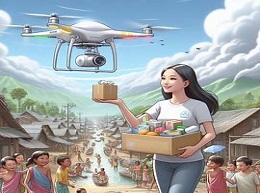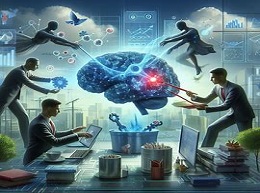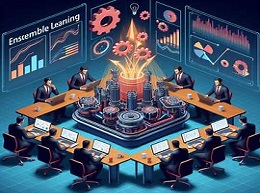AI in Space Exploration: From Robotics to Image Analysis

AI's Role in Space Exploration
Artificial intelligence (AI) is revolutionizing space exploration by enhancing robotics for extraterrestrial missions and enabling advanced image analysis for celestial discoveries. This article explores the applications, advancements, and future prospects of AI in space exploration.
Robotics in Extraterrestrial Missions
Autonomous Navigation:
- AI-powered autonomous navigation systems enable spacecraft and rovers to navigate autonomously across challenging terrain on celestial bodies such as Mars, minimizing human intervention and enhancing mission efficiency.
Example: NASA's Mars Curiosity Rover
- NASA's Mars Curiosity rover utilizes AI algorithms to autonomously navigate the Martian terrain, avoiding obstacles and selecting safe paths for exploration. This autonomy enables Curiosity to traverse vast distances and conduct scientific investigations independently.
Image Analysis for Celestial Discoveries
Object Recognition and Classification:
- AI algorithms analyze images captured by telescopes and spacecraft to identify and classify celestial objects such as stars, galaxies, and exoplanets, aiding astronomers in their quest to understand the universe's mysteries.
Example: Kepler Space Telescope
- The Kepler Space Telescope utilized AI algorithms to analyze vast amounts of data and identify exoplanets orbiting distant stars. By detecting subtle variations in starlight caused by exoplanet transits, Kepler discovered thousands of exoplanets, revolutionizing our understanding of planetary systems beyond our solar system.
AI-Powered Spacecraft Systems
Adaptive Control Systems:
- AI-based adaptive control systems optimize spacecraft operations by continuously adjusting parameters such as thruster firings, solar panel orientations, and communication protocols to maximize efficiency and mission success.
Example: SpaceX's Crew Dragon Capsule
- SpaceX's Crew Dragon capsule employs AI-based adaptive control systems to autonomously dock with the International Space Station (ISS) and perform rendezvous and docking maneuvers with precision and reliability, ensuring safe crew transportation to and from the ISS.
Challenges and Opportunities
Data Processing and Storage:
- Space missions generate vast amounts of data that must be processed and stored efficiently. AI algorithms optimized for edge computing and onboard data analysis are crucial for maximizing data utilization and minimizing communication latency.
Example: Mars Perseverance Rover
- NASA's Mars Perseverance rover employs AI algorithms to prioritize scientific data collection based on mission objectives and available resources. By autonomously analyzing terrain and geological features, Perseverance optimizes its exploration strategy and maximizes scientific discovery potential.
Future Directions: AI-Enabled Space Exploration
Swarm Robotics:
- Future space missions may deploy swarms of AI-powered robotic explorers to collaboratively explore planetary surfaces and conduct scientific experiments, leveraging collective intelligence for enhanced exploration capabilities.
Deep Learning for Astrophysics:
- Deep learning algorithms hold promise for revolutionizing astrophysical research by analyzing vast datasets from telescopes and spacecraft, uncovering new insights into the cosmos and advancing our understanding of fundamental astrophysical processes.
Advancing the Final Frontier with AI
In conclusion, AI is transforming space exploration by enabling autonomous robotics for extraterrestrial missions and facilitating advanced image analysis for celestial discoveries. As AI technologies continue to evolve, they will play an increasingly vital role in expanding humanity's knowledge of the universe and unlocking the mysteries of the cosmos. By harnessing the power of AI, space agencies and researchers are poised to embark on new frontiers of exploration, innovation, and discovery beyond Earth's boundaries.














